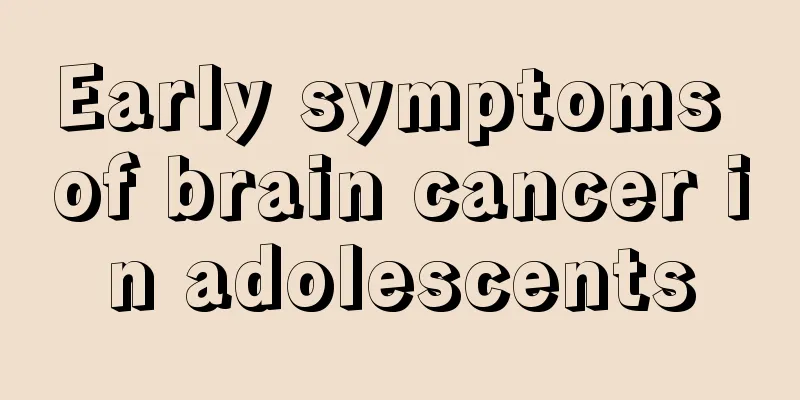Early symptoms of brain cancer in adolescents

|
The so-called brain cancer is a tumor that grows inside the skull. It can be divided into benign and malignant brain tumors. In recent years, the incidence of brain tumors has continued to rise, and the age of onset is very wide, and it can occur in any age group. As brain tumors continue to develop, they will squeeze and push normal brain tissue inside the skull, eventually causing increased intracranial pressure and putting life at risk. According to a large number of clinical research surveys, brain tumors are particularly common in the age group of 10 to 30 years old, and the majority of them are under 20 years old. Brain cancer mainly manifests as headache, which may be combined with corresponding symptoms of increased intracranial pressure and physical paralysis, such as nausea, vomiting, blurred vision, etc. Depending on the location of the tumor and the degree of progression, focal neurological deficits may occur, such as convulsions, mild hemiplegia, and language disorders. Endocrine disorders and gigantism! Tinnitus, deafness, hearing loss! Cerebellar and brainstem symptoms: mainly manifested as ataxia, unsteady walking, staggering gait, hoarseness, coughing when drinking water, and difficulty swallowing! Mental symptoms are often manifested as slow reaction, laziness, decreased or even loss of recent memory, and in severe cases, loss of self-awareness and judgment. They may also manifest as bad temper, irritability or euphoria. Epileptic seizures, including generalized seizures and localized seizures, are most common in the frontal lobe, followed by the temporal lobe, parietal lobe, and least common in the occipital lobe. In some cases, there are precursors before convulsions. For example, in case of temporal lobe tumors, there are often precursors such as hallucinations and dizziness before epileptic seizures. In case of parietal lobe tumors, there may be abnormal sensations such as limb numbness before seizures. Symptoms of pyramidal tract damage are manifested as weakness or paralysis of the half body or a single limb on the opposite side of the tumor, with positive pathological signs. Sensory impairment is manifested as impairment of position sense, two-point discrimination, pattern sense, texture sense, and entity sense of the limb on the opposite side of the tumor. Aphasia is divided into motor aphasia and sensory aphasia. Visual field changes: manifested as visual field defects and hemianopsia. Usually, you should maintain good personal living habits, pay attention to personal hygiene, adjust your mentality, actively cooperate with the doctor's treatment, eat a light and nutritious diet, quit smoking, quit drinking, avoid spicy and irritating foods, and eat less pickled and smoked foods. |
<<: Is renal hamartoma hereditary?
Recommend
What causes heavy moisture in the body
The phenomenon of heavy moisture in the body is q...
What should I do if my neck makes a crackling sound when I shake it left and right?
The neck is a part of the body, and turning the n...
It turns out that this is the cause of urethral pain
Many people feel pain when they go to the toilet....
What is non-GMO soybean
I believe everyone must have heard of non-GMO soy...
How to do health exercises for lumbar disc herniation
Lumbar disc herniation is a common problem. This ...
What's the matter with high albumin
Albumin is an important reference data for checki...
Is the chance of breast cancer high 3 months after giving birth?
The chance of breast cancer three months after ch...
How to clean the dirt on earrings?
In the past, generally only girls liked to wear e...
The consequences of eating spicy food when having a fracture
After a fracture occurs, timely treatment is requ...
Why is TSH high?
Thyroid stimulating hormone is an important homeo...
Is the scent of lily harmful to humans?
Lily is a common ornamental plant. Many people li...
How to let the dough rise
Dough is the raw material for making pasta and ma...
What are the symptoms of keratotic tinea pedis
Keratotic tinea pedis is highly contagious, so we...
What to do if you get pregnant during chemotherapy for breast cancer
Many people may think that if breast cancer is fo...
How to clean dried clams?
For easy storage, many people dry fresh razor cla...









